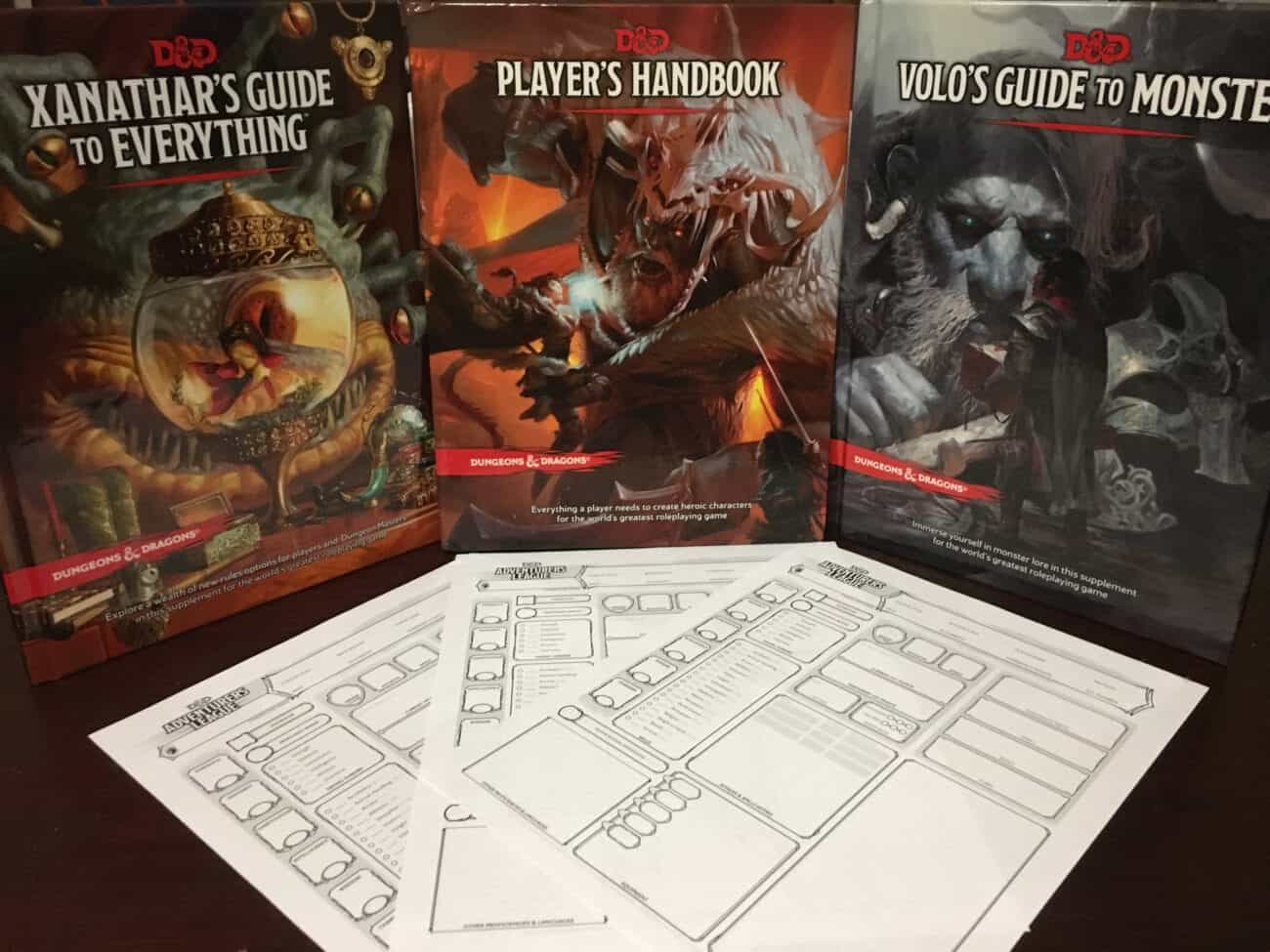Dungeons & Dragons 5th Edition is the latest Edition of one of the world’s most popular role-playing games. This new version draws heavily on classic elements from previous editions while introducing various exciting new gameplay features and improvements. The game encourages players to create unique characters, team up with friends to take on challenging adventures, and engage in epic battles against terrifying monsters. Whether you’re a veteran player looking for a fresh challenge or a newcomer looking to explore the world of Dungeons & Dragons for the first time, 5th Edition has something for everyone.

At its core, Dungeons & Dragons is all about storytelling. Players work together to create an immersive fantasy world of adventure and excitement, where they can embody their character and go on daring quests as a group. Each character has strengths and weaknesses, allowing players to experiment with different classes and skills to find their ideal role within the party.
In addition to the core rules that guide gameplay, each Edition of Dungeons & Dragons includes various supplementary materials that offer new options for characters and campaigns. These include new spells, magical items, monsters, and much more. There are also official online communities where players can share their creations and tips for success in the game, making it easy for newcomers to get involved immediately.
Whether you’re looking for thrilling combat encounters or dramatic storytelling opportunities, there’s something for everyone in Dungeons & Dragons 5th Edition. With its rich history and endless possibilities for adventure, this beloved tabletop RPG remains as popular today as ever.
What are the height and weight ranges for each size category of DND creature?
D&D sizes are categorized based on height and weight ranges, with smaller creatures typically occupying less space than larger ones.
DND size:
The smallest creatures are Fine and Diminutive, ranging from 6 inches in height to about an inch in size. Medium-sized creatures, such as humans or elves, fall within the typical height range of 4 to 8 feet. More giant creatures include Large (8 to 16 ft), Huge (16 to 32 ft), Gargantuan (32 to 64 ft), and Colossal (64+ ft).
Please check the Table:
| DND Size Category | Maximum Height | Max. Weight | Space |
|---|---|---|---|
| Fine | 6in. or less | 1/8 Lb or less | 1/2 ft. |
| Diminutive | 1 ft. | 1 Lb | 1 ft. |
| Tiny | 2 ft. | 8 Lb | 2 1/2 ft. |
| Small | 4 ft. | 60 Lb | 5 ft. |
| Medium | 8 ft. | 500 Lb | 5 ft. |
| Large | 16 ft. | 4000 Lb | 10 ft. |
| Huge | 32 ft | 32000 Lb | 15 ft. |
| Gargantuan | 64 ft. | 250000 Lb | 20 ft. |
| Colossal | 64 ft. or more | 250000 Lb or more | 30 ft. |
Each size category is associated with specific weight ranges and physical characteristics that distinguish them from other size categories. For example, small or medium-sized creatures tend to be more elegant than large creatures due to their smaller size and lower mass. In general, smaller creatures can maneuver more quickly in combat. They can evade attacks more effectively, while more giant creatures tend to be stronger and better able to withstand damage from enemy attacks.
If you need exactly DND size 5e modifiers (DND size scale) and natural reach tall, please see the Table below:
| Size category | AC Modifier | Special Attacks Modifier | Hide Modifier | Natural Reach Tall | Natural Reach Long | Carrying Capacity Multiplier |
|---|---|---|---|---|---|---|
| Fine | 8 | −16 | 16 | 0 ft. | 0 ft. | ×1/8 |
| Diminutive | 4 | −12 | 12 | 0 ft. | 0 ft. | ×1/4 |
| Tiny | 2 | −8 | 8 | 0 ft. | 0 ft. | ×1/2 |
| Small | 1 | −4 | 4 | 5 ft. | 5 ft. | ×3/4 |
| Medium | 0 | 0 | 0 | 5 ft. | 5 ft. | ×1 |
| Large | −1 | 4 | −4 | 10 ft. | 5 ft. | ×2 |
| Huge | −2 | 8 | −8 | 15 ft. | 10 ft. | ×4 |
| Gargantuan | −4 | 12 | −12 | 20 ft. | 15 ft. | ×8 |
| Colossal | −8 | 16 | −16 | 30 ft. | 20 ft. | ×16 |
Regarding gameplay mechanics in D&D 5e, size generally does not directly affect a creature’s ability scores or hit points; it may impact other aspects of how a beast functions in combat or different situations. In general, smaller creatures have higher Dexterity scores and gain extra advantage on attack rolls against larger enemies due to their size difference. Meanwhile, more giant creatures tend to have higher Strength scores and carry heavier equipment or weapons that cause extra damage when striking smaller targets.
Overall, understanding the different sizes available in D&D helps players create characters that feel genuinely unique and play differently from each other, depending on their attributes and strengths. Whether you’re looking for a small but quick melee fighter with high skill or a large but slow tank with high strength stats, there is a perfect fit for every player’s preferences within the wide variety of sizes available in D&D!
- Facebook Ads to Get Followers! - December 27, 2024
- ClickUp vs. Slack - December 20, 2024
- Mastering E-Commerce Analytics: A Blueprint for Success





